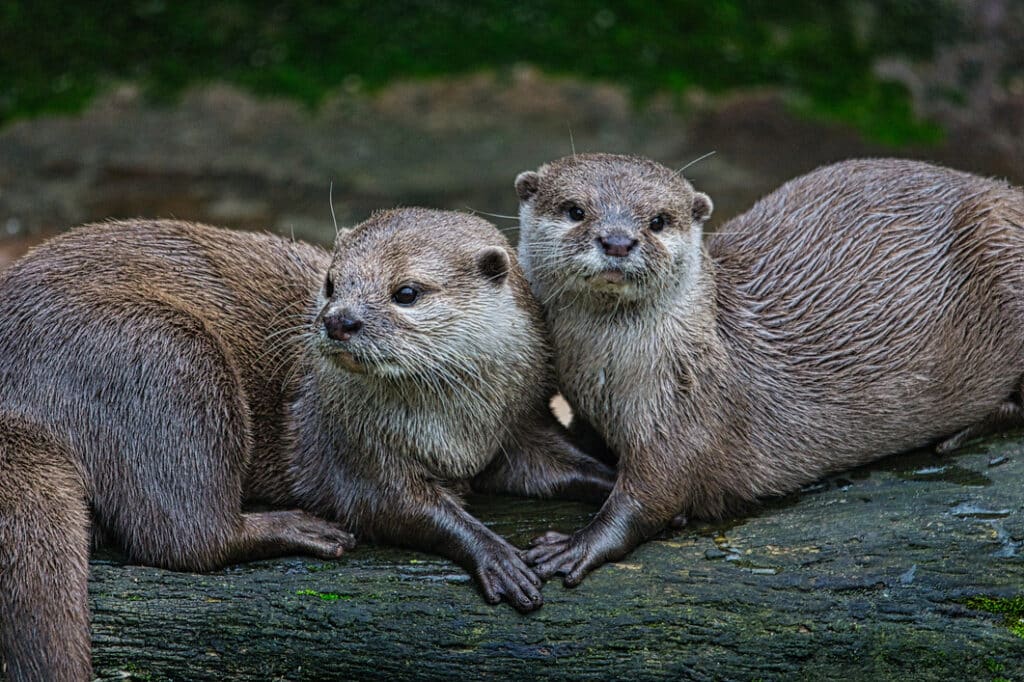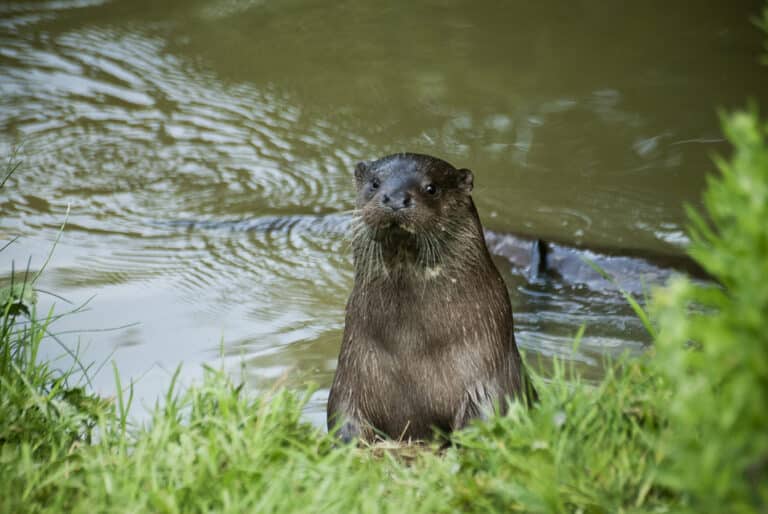Facts about the Eurasian Otter
Scientific name: Lutra lutra
At a glance
- Lacking blubber, otters are protected from the cold by their dense fur.
- Areas can be made more attractive to otters by establishing “otter havens” kept free from human disturbance.
- Almost wiped out in the UK by the 1960s there may be as many as 10,000 otters here now.

One of thirteen species of otter found in aquatic habitats around the world, the Eurasian Otter is a large member of the mustelids (the weasel family).
The only wild otter species found in the UK, males can reach a metre in length and weigh up to 12 kilograms. Otters need clean rivers, filled with food, and overgrown banks where they can raise their cubs, and have exceptional senses of smell, hearing, and eyesight above and below water. Lacking blubber, otters are protected from the cold by dense fur (the Sea Otter Enhydra lutris has an exceptionally thick coat of fur, the densest in the animal kingdom).
Once widespread and found in most of the UK’s river systems (as well along the coast, particularly along rocky coastlines off Shetland and west coast of Scotland) the Otter suffered a huge population crash during the middle part of the 20th century.
The cause was the combined effects of persecution (including hunting by otter packs), water pollution, the use of dieldrin (a now banned organochloride used as a sheep dip, that bioaccumulated in the fish that Otters ate), and landscape-scale habitat destruction, particularly the building of weirs which stopped fish traveling upstream and the widespread drainage of wet areas that took place as part of agricultural intensification. The situation was particularly serious in southern and central England, with otters vanishing completely and becoming locally extinct.
Otters are now recovering. Rivers are less polluted (though many are still not clean), and they are strictly protected from persecution by both the Wildlife and Countryside Act (1981) and the Hunting Act (2004). From the lows of the 1960s it’s thought that there may be as many 10,000 in the UK now.

Conservationists have helped by launching small-scale reintroduction programmes, but Otter populations in England especially are still fragmented. They breed slowly, and ‘tidied up’ and canalised riversides still lack appropriate cover for otters to lie up during the day. Areas can be made more attractive to otters by establishing “otter havens,” where river banks are planted-up and kept free from human disturbance. Marshes may also be very important habitat for raising young and as a source of frogs (which is why Otters often return once reintroduced Beavers start creating pools behind their dams).
Though strictly illegal now, there are still Otter Packs at work. Timed to coincide with the end of the foxhunting ‘season’, the Master of Minkhounds Association say there are 12 hunts operating in the UK today, and while, as the name suggests, they claim to be hunting non-native mink (often with the tacit approval of ‘conservationists’ who blame mink for the crash in the Water Vole population), minks and otters both live alongside rivers and hounds are not trained to be able to tell the difference between the two species. Additionally hounds will be repeatedly sent up and down the same stretch of river trying to catch a scent disturbing wildlife, while ‘huntsmen’ trample and destroy riverside vegetation.
